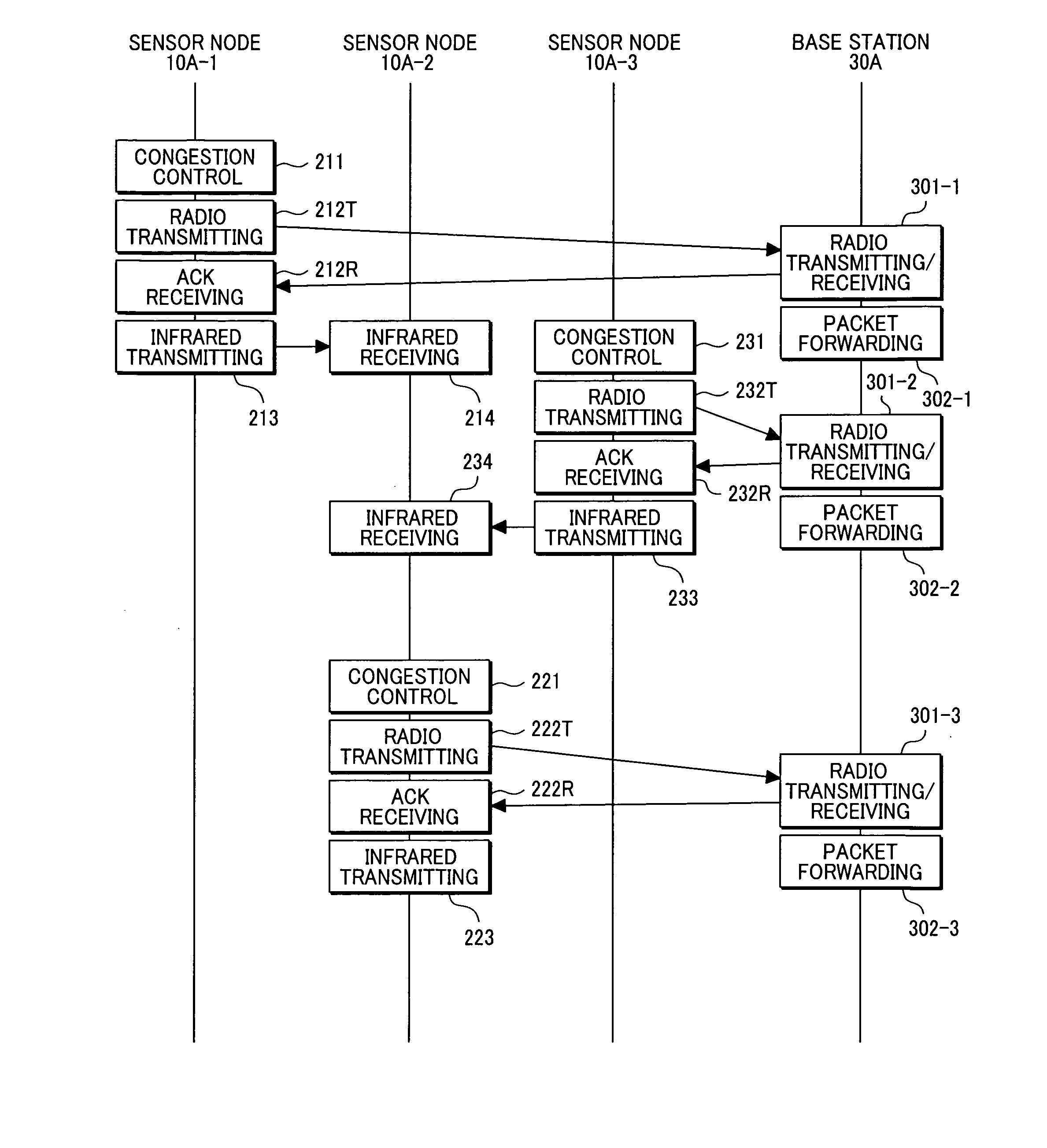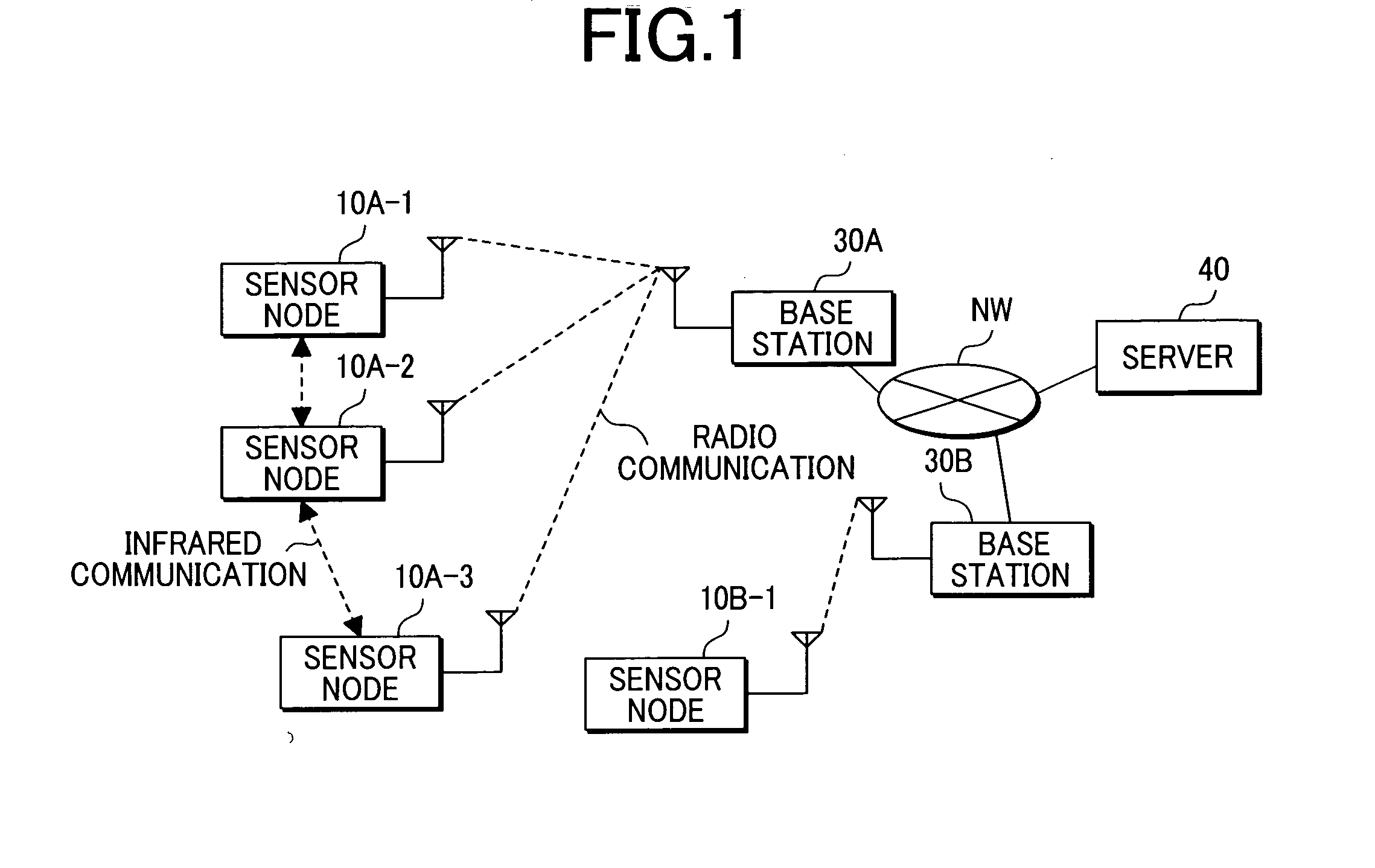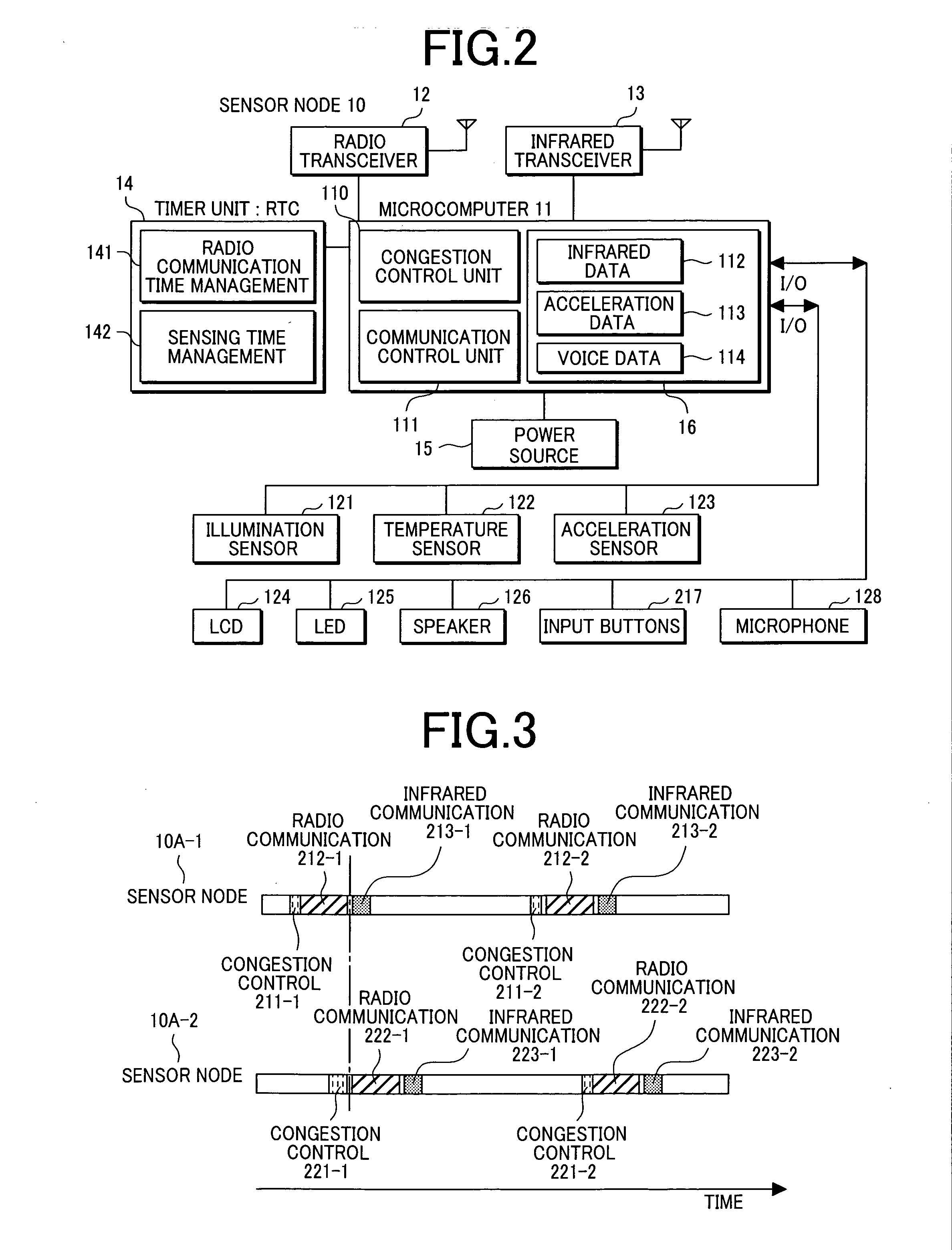Wireless communication system and wireless terminal apparatus for sensor network
a wireless terminal and wireless communication technology, applied in the field of wireless communication systems, can solve the problems of difficult discrimination of each signal on the receiving sid
- Summary
- Abstract
- Description
- Claims
- Application Information
AI Technical Summary
Benefits of technology
Problems solved by technology
Method used
Image
Examples
first embodiment
[0067]FIG. 4 shows a communication sequence between the sensor node 10 (10A-1 to 10A-3) and the base station 30A according to the present invention. It is assumed here that the sensor nodes 10A-1 and 10A-2 and the sensor nodes 10A-2 and 10A-3 are in the spatial relationship (in terms of distance and angle) in which an infrared communication is possible mutually, and that the sensor nodes 10A-1 and 10A-3 are in the spatial relationship in which an infrared communication is impossible.
[0068]The sensor node 10A-1 performs the congestion control (Step 211) by carrier sensing to confirm that the radio communication is in a collision-free state, and transmits a radio communication frame to the base station 30A (Step 212T). Upon succeeding in receiving the radio communication frame, the base station 30A returns an ACK frame to the sensor node 10A-1 (Step 301-1), and forwards to the server 40 the content of the received frame as a data packet (Step 302-1). Upon receiving the ACK signal from...
second embodiment
[0090]FIG. 9 shows a communication sequence between the sensor node10 (10A-1 to 10A-3) and the base station 30A according to the invention.
[0091]This embodiment is characterized by that each sensor node having completed the radio communication with the base station repeats transmission of the sensor node identifier by the infrared communication two or more times in the radio communication period T0.
[0092]As described before, each sensor node 10 performs the congestion control individually to start the radio communication (212, 222, 232 . . . ). For this reason, in the infrared communication performed immediately after the radio communication, each sensor node can transmit the node identifier without conflicting with other sensor nodes. However, in the second or later infrared communication performed in the same period T0, there is no guarantee that conflict with other sensor nodes can be avoided.
[0093]According to the present embodiment, as illustrated in FIG. 10, each sensor node p...
PUM
 Login to View More
Login to View More Abstract
Description
Claims
Application Information
 Login to View More
Login to View More - R&D
- Intellectual Property
- Life Sciences
- Materials
- Tech Scout
- Unparalleled Data Quality
- Higher Quality Content
- 60% Fewer Hallucinations
Browse by: Latest US Patents, China's latest patents, Technical Efficacy Thesaurus, Application Domain, Technology Topic, Popular Technical Reports.
© 2025 PatSnap. All rights reserved.Legal|Privacy policy|Modern Slavery Act Transparency Statement|Sitemap|About US| Contact US: help@patsnap.com



